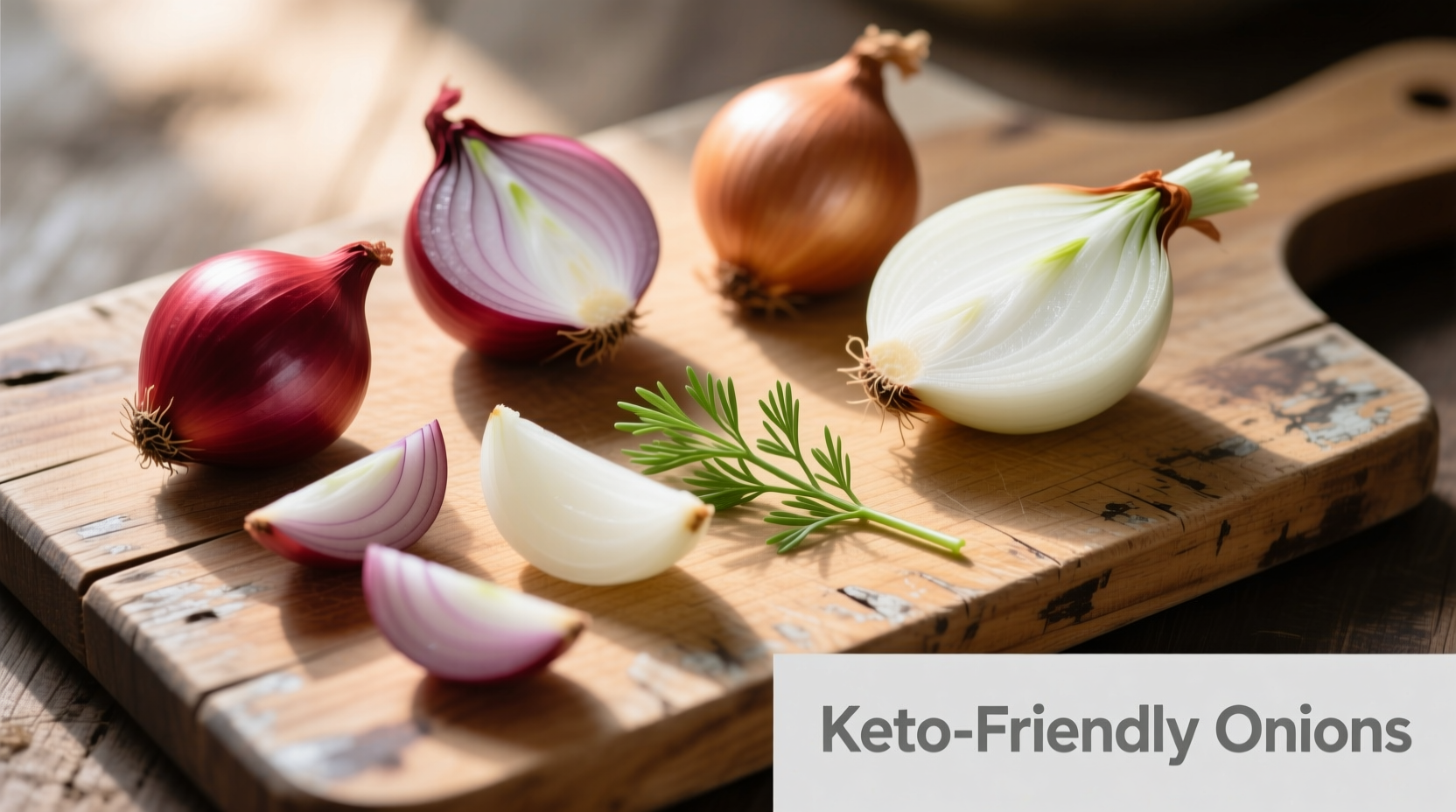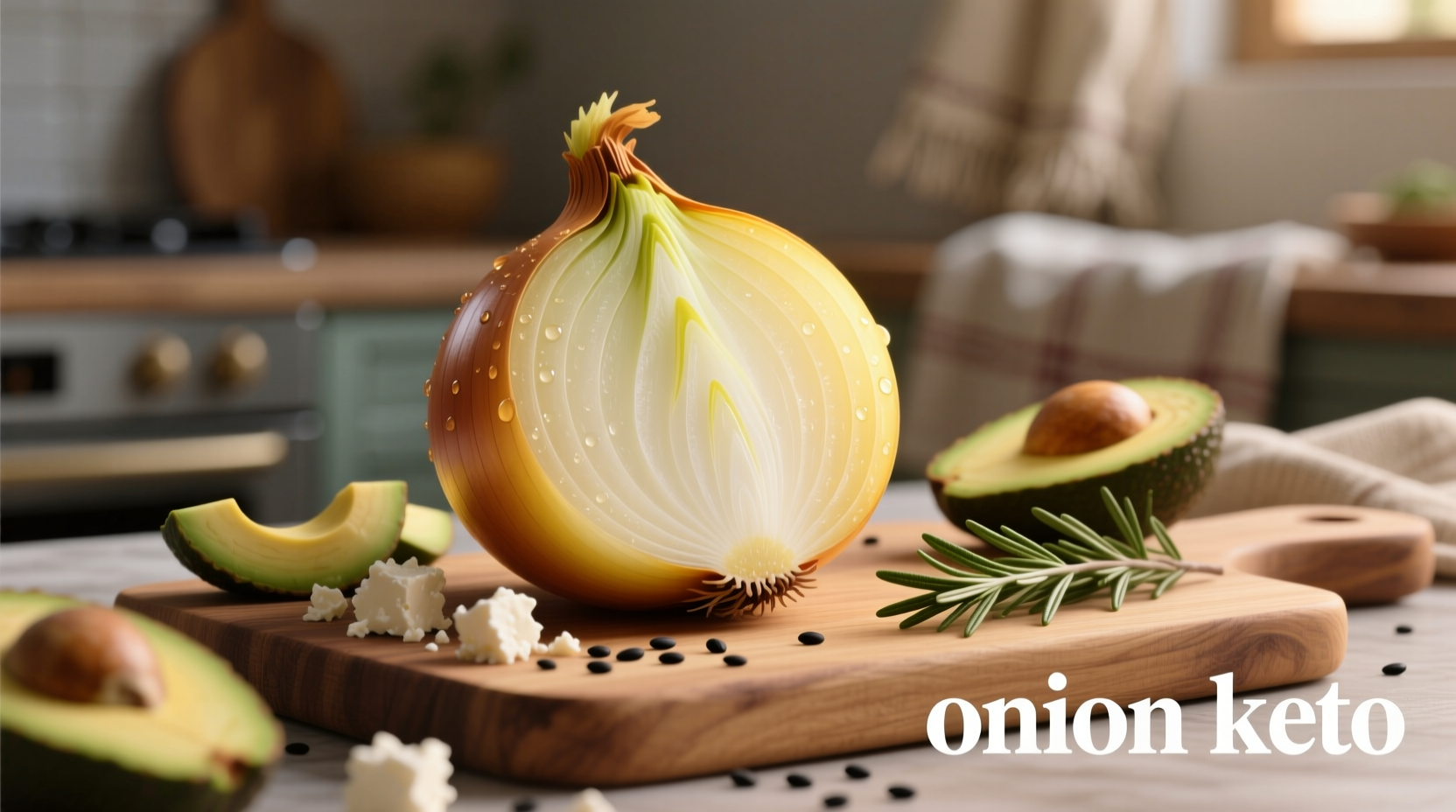Many keto dieters mistakenly eliminate onions completely, unnecessarily limiting their culinary options. Understanding the precise carbohydrate content of different onion varieties allows you to enjoy their distinctive flavor while staying within your daily 20-50g net carb limit. This guide provides science-backed information to help you strategically incorporate onions into your keto meal plan without compromising your metabolic state.
The Carb Reality of Onions on Keto
Not all onions are created equal when it comes to keto compatibility. The carbohydrate content varies significantly between varieties, which directly impacts how much you can include in your meals while maintaining ketosis.
| Onion Type | Raw (per 100g) | Net Carbs | Keto-Friendly Serving Size |
|---|---|---|---|
| Yellow Onion | 9.3g total carbs | 5.9g | 2 tablespoons (30g) |
| Red Onion | 9.0g total carbs | 5.6g | 2 tablespoons (30g) |
| White Onion | 8.6g total carbs | 5.2g | 2 tablespoons (30g) |
| Green Onions | 7.3g total carbs | 4.3g | 1/4 cup (25g) |
| Scallions | 7.3g total carbs | 4.3g | 1/4 cup (25g) |
Data sourced from the USDA FoodData Central shows that green onions and scallions offer the lowest net carb content among common onion varieties. This makes them particularly valuable for keto dieters who want to maximize flavor with minimal carb impact. When tracking your intake, remember that cooking concentrates flavors but doesn't significantly change the carb density per volume.
Strategic Incorporation in Your Keto Meal Plan
Professional chefs and nutritionists recommend these practical techniques for including onions in keto meals:
- Raw application: Use 1-2 tablespoons of finely minced raw onion as a finishing touch to preserve maximum flavor with minimal quantity
- Caramelization technique: Cook onions slowly over low heat to concentrate flavor, allowing you to use smaller amounts while achieving greater taste impact
- Flavor layering: Combine small amounts of onion with complementary aromatics like garlic and herbs to create complex flavors without exceeding carb limits
- Strategic timing: Consume onion-containing meals earlier in the day when you have more metabolic flexibility
According to registered dietitians at the Academy of Nutrition and Dietetics, "The key to including higher-carb vegetables like onions in keto is precision tracking and strategic placement within your daily carb budget." Their research indicates that most keto dieters can comfortably include 15-30g of onion (about 1-2 tablespoons) in 1-2 meals per day without disrupting ketosis.
Keto-Friendly Onion Alternatives
When you need even lower-carb options, consider these alternatives that provide similar flavor profiles:
- Asafoetida (hing): This pungent spice offers an onion-like flavor with virtually zero carbs—just a pinch (about 1/8 teaspoon) replaces 1/4 cup of onions
- Radish greens: Mildly peppery with a slight onion note, these contain only 1.9g net carbs per 100g
- Chives: With just 2.8g net carbs per 100g, they provide onion flavor with significantly fewer carbs than bulb onions
- Leek tops: The green portions contain fewer carbs than the white base and offer a milder onion flavor

Common Misconceptions About Onions and Keto
Several myths persist in the keto community regarding onions:
Myth: "All onions will kick you out of ketosis"
Reality: Only excessive portions pose a risk. Small, measured amounts fit within standard keto parameters.
Myth: "Cooking increases the carb content of onions"
Reality: Cooking concentrates flavor but doesn't increase carb density per gram. Volume decreases while carb content remains proportional.
Myth: "Red onions are significantly higher in carbs than yellow onions"
Reality: The difference is minimal (5.6g vs 5.9g net carbs per 100g), making color choice primarily a flavor and culinary decision.
Practical Tracking Tips for Keto Dieters
Accurate measurement is crucial when incorporating onions into your keto diet:
- Use kitchen scales for precise measurement rather than estimating by volume
- Track onions separately in your food logging app to monitor cumulative daily intake
- When dining out, assume conservative estimates (1/4 cup chopped onion = approximately 15g net carbs)
- Consider the cooking method—roasted or caramelized onions have reduced volume but similar carb density per gram
Research from the National Institutes of Health indicates that individual carbohydrate tolerance varies significantly on keto diets. Some people can maintain ketosis with up to 50g net carbs daily, while others need to stay below 20g. This variability means you should monitor your personal ketone levels when introducing onions to determine your specific tolerance.
Conclusion: Smart Onion Strategies for Keto Success
Onions don't need to be eliminated from your keto diet—they just require strategic implementation. By understanding the precise carb content of different varieties, measuring portions carefully, and using professional cooking techniques to maximize flavor impact with minimal quantity, you can enjoy the culinary benefits of onions while maintaining ketosis. Remember that green onions and scallions offer the most keto-friendly options, while asafoetida provides an excellent zero-carb alternative for when you need to conserve your carb budget.











 浙公网安备
33010002000092号
浙公网安备
33010002000092号 浙B2-20120091-4
浙B2-20120091-4